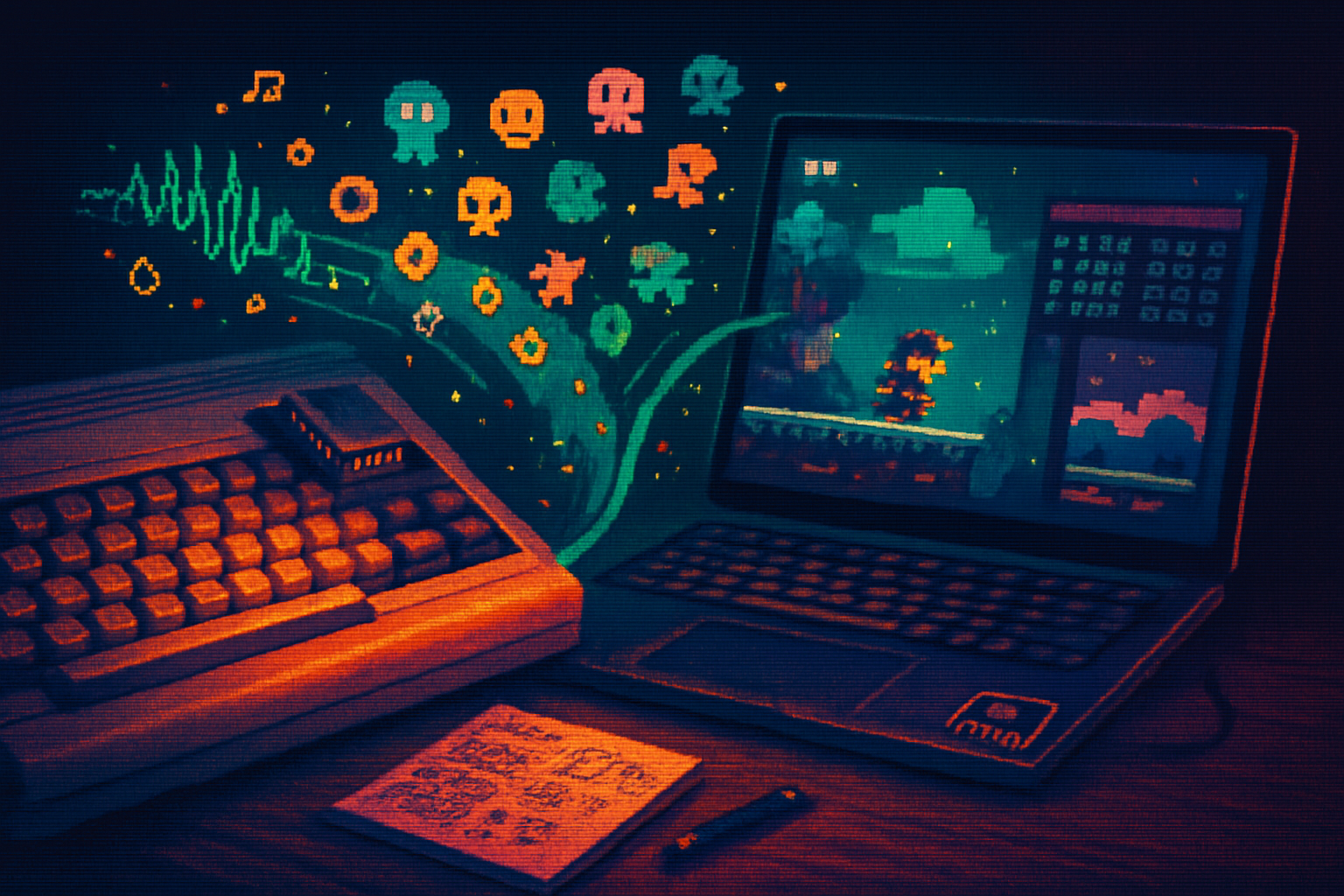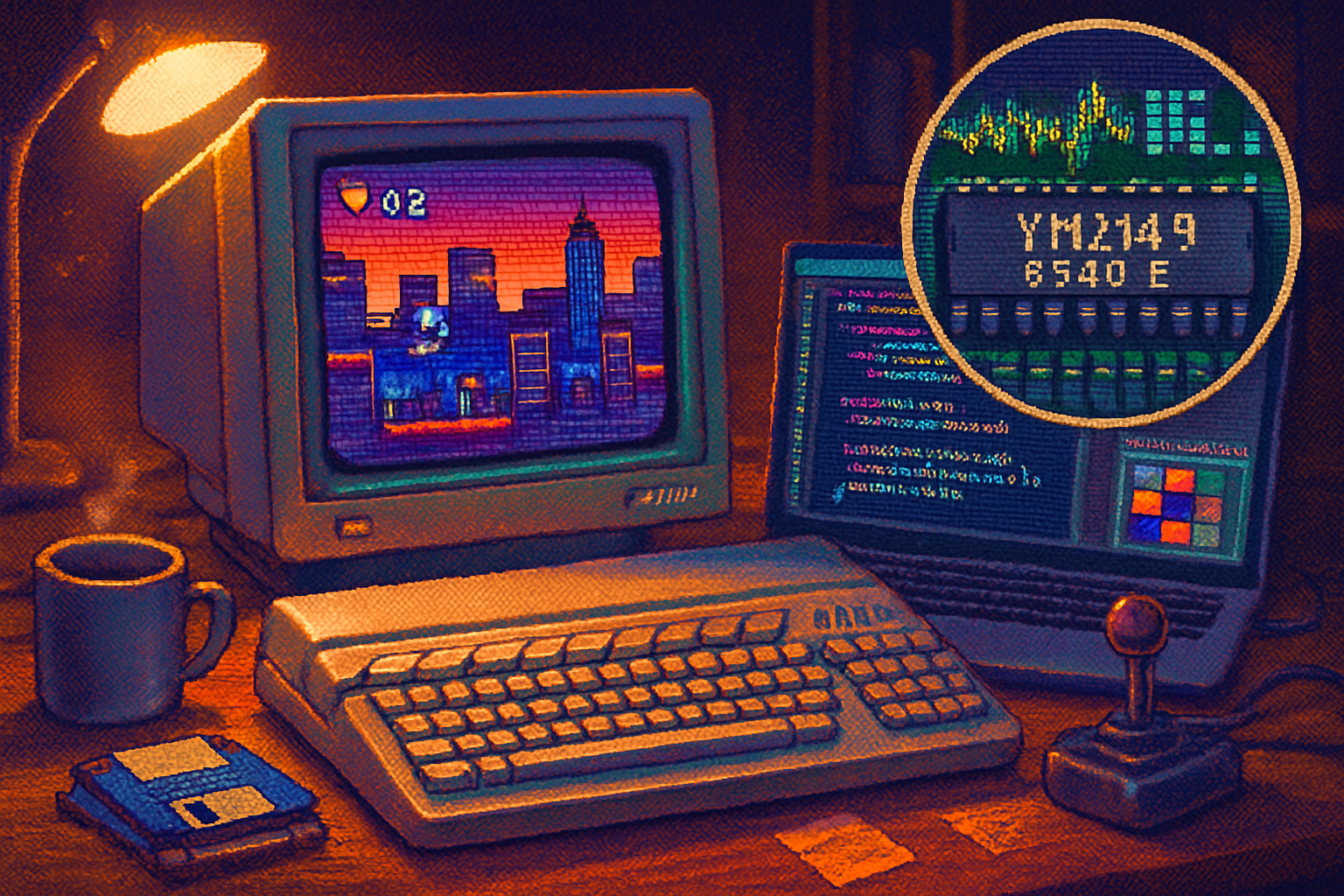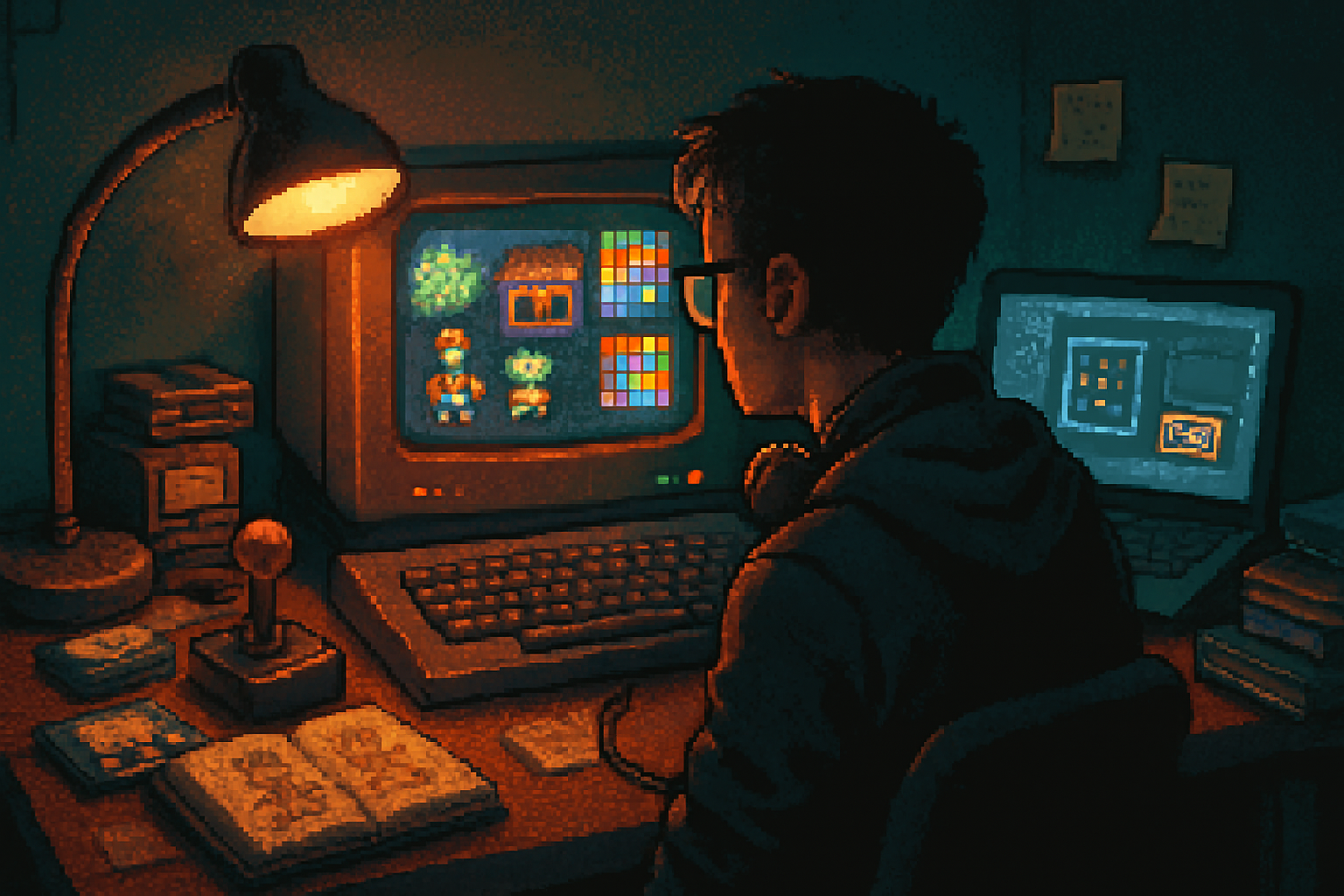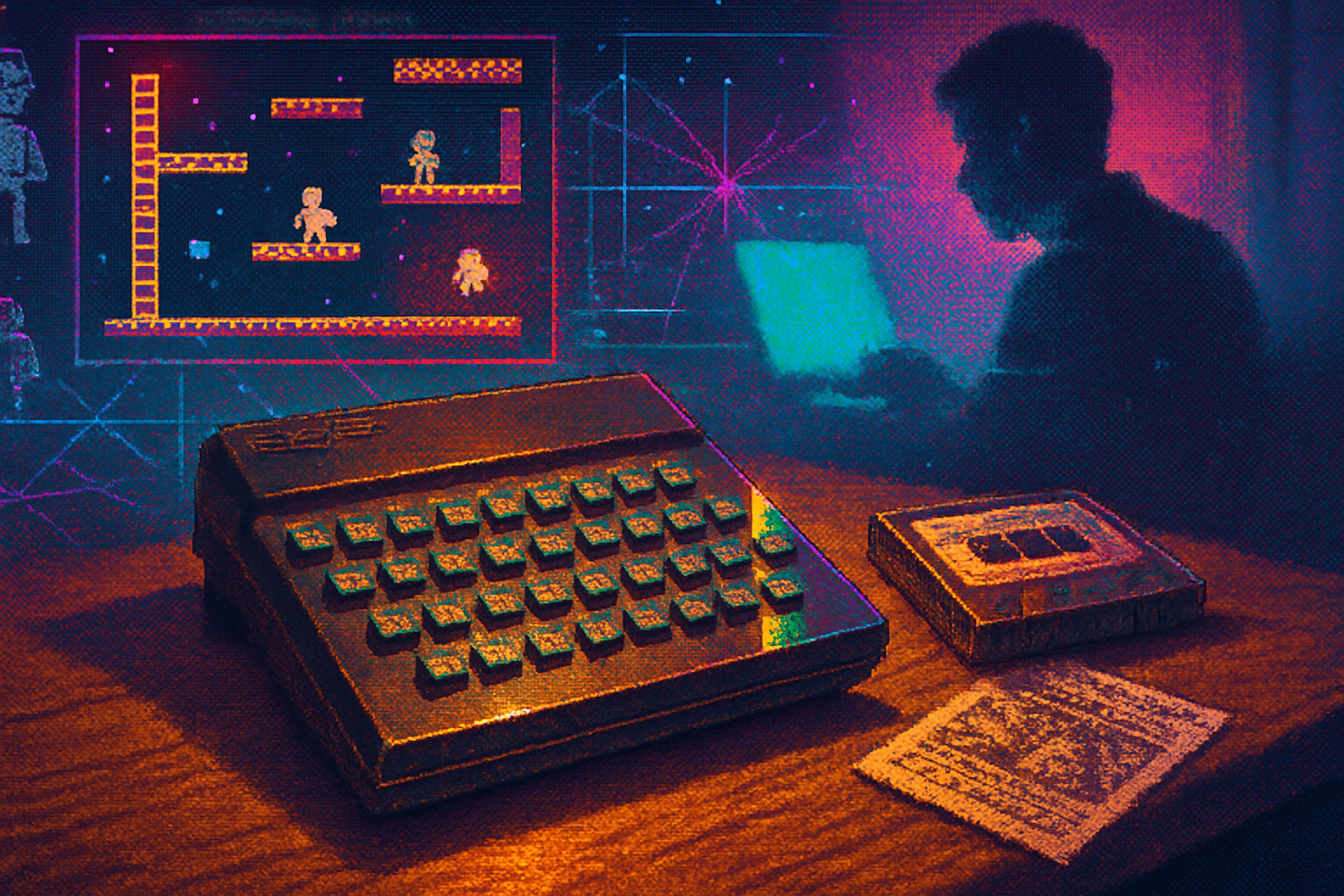· retrotech · 6 min read
The Atari 800's Influence on Modern Gaming: A Retro Renaissance
How a modest 1980s home computer - the Atari 800 - seeded ideas, tools, and habits that still shape game design today. From custom chips to multiplayer economics, the 8‑bit ethos echoes in modern indie hits.
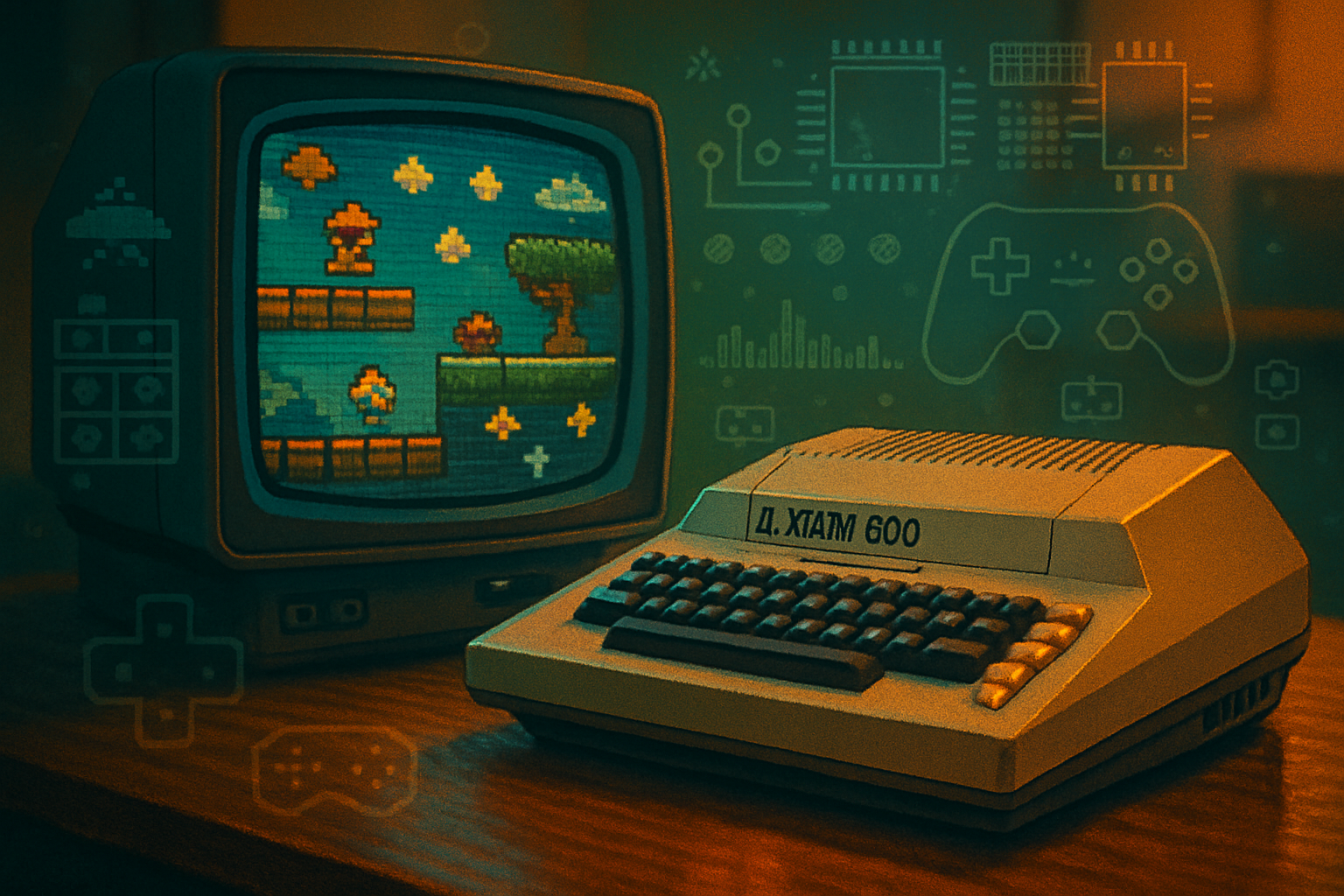
I remember a photo: a living room in 1981, a family gathered around a humming CRT, a squat beige box with woodgrain on its sides and a cartridge slot like a throat. One kid played, three watched. The game wasn’t photorealistic; it didn’t need to be. It was immediate, cunning, and somehow big enough to crowd the whole room.
That box was the Atari 800. It was not the flashiest machine on the block. But it was a machine that taught a generation how to make games, how to think about play, and how to squeeze artistry from scarcity. The Atari 800’s legacy is not a single mechanic or a single hit; it’s a set of cultural and technical habits that modern developers - from AAA teams to solo indies working in basements - still adopt, adapt, and glorify.
Small silicon, large consequences
The Atari 800 belongs to the broader Atari 8‑bit family - a line of home computers launched at the end of the 1970s that punched well above their weight for graphics and sound thanks to clever custom chips. The ANTIC and GTIA chips handled graphics in ways that gave developers access to smooth scrolling, hardware-supported playfields, and colorful sprites. The POKEY chip took care of audio and input, producing a sound palette distinctive enough to become iconic.[https://en.wikipedia.org/wiki/Atari_8-bit_family][https://en.wikipedia.org/wiki/ANTIC][https://en.wikipedia.org/wiki/POKEY]
Why does that matter today? Because those chips forced developers to think like chefs with only a few ingredients: no brute-force polygons, no huge texture banks. Instead, designers learned to build compelling systems with limited resolution, limited memory, and merciless CPU budgets. Constraints didn’t cripple creativity - they curated it.
Design lessons that survived the leap to modern hardware
Here are the Atari 800’s most durable contributions to game design and why they persist:
Tight mechanical focus. Memory and CPU limits meant games emphasized compact, repeatable loops - memorable core mechanics rather than sprawling, feature-bloated epics. The lesson - a compelling loop beats many good ideas spread thin. Modern indie hits like Celeste or Into the Breach trade on this economy of design.
Emergent systems. Games such as M.U.L.E. used simple rules to produce complex player interactions and emergent behavior. Economic tug‑of‑war, asymmetric multiplayer, and player-driven markets are mainstream mechanics now; M.U.L.E. was doing a proto‑version on an Atari 8‑bit in 1983.[https://en.wikipedia.org/wiki/M.U.L.E.]
Local multiplayer and social play. Split attention around a single screen made gaming social in a way that online matchmaking never fully replaces. This ethos survives in modern couch‑co‑op revivals and party games like Overcooked and the steady market for local multiplayer indies.
Tooling that lowered the bar. BASIC interpreters and accessible assemblers shipped with the platform. A teenager with curiosity and a manual could create and ship a program. That culture - of accessible tooling enabling hobbyists to become creators - is the great‑grandparent of today’s indie and modding movements.
Audio identity from scarcity. The POKEY chip’s quirks forced composers to think melodically and rhythmically in tight patterns. That chiptune aesthetic carries powerfully into indie soundtracks, nostalgia remixes, and retro synth scores.
Concrete echoes: games and genres that owe a nod
Space and simulation lineage - Star Raiders (Atari 8‑bit) offered an early open‑world-like space combat experience with strategic overlays, a clear ancestor to later space sims and the sense of scale found in modern titles like Elite: Dangerous.[
Strategy and AI experiments - Chris Crawford’s Eastern Front showed how simple algorithms could yield strategic depth, influencing later designers who wanted AI that felt clever without expensive hardware.[
Economic and social multiplayer - M.U.L.E.’s combination of resource management, auction mechanics, and local multiplayer created a template for emergent player interactions that you can see echoed in contemporary asymmetric multiplayer and economy‑heavy indies.
Visual and auditory style - Pixel art and chiptune aren’t mere nostalgia. They’re a design language born of constraint. Modern titles use that language either for aesthetic homage or because the limitations that birthed it still produce clarity and rhythm that modern high‑fidelity visuals sometimes obscure.
The Atari 800 as a cultural crucible
Hardware aside, the Atari 800 mattered because of culture. It was cheap enough and open enough to seed communities: user groups, magazine type‑ins, BBSes, and small publishers. That’s where skills and standards diffused. The Atari community normalized the idea that games could be crafted by small, passionate teams - or even individuals. That rebellion against industrial-scale gatekeeping is again central to indie games today.
Put bluntly: the Atari 800 democratized authorship. It was a tiny publishing platform with a surprising reach.
What modern developers still steal (and why they should)
If you’re a designer today, here are practical, Atari‑derived takeaways worth copying:
Design around core interaction first. If the primary interaction isn’t fun for ten minutes, no secondary system will save you.
Embrace constraints intentionally. Limit scope, controls, and feedback channels to crystallize player choices. Constraints focus design; they do not limit imagination.
Favor deterministic systems with emergent outcomes. Simple deterministic rules are easier to test, tune, and let players master - and they often produce surprising emergent behavior.
Keep local play in your toolbelt. Not every game needs online infrastructure. Local multiplayer creates rich social dynamics and immediate feedback that remote play rarely matches.
Invest in an audio identity. Good sound design is cheap and high‑impact. The Atari’s POKEY taught us that memorable audio can be sculpted from scarcity.
The romanticized danger: nostalgia as anesthetic
A confession: nostalgia seduces. Pixel art and chiptunes can become a stylistic shorthand for “this is a game,” a lazy badge that obscures poor design beneath a veneer of 8‑bit charm. The Atari 800’s legacy is an instruction manual, not a costume catalog. Use the lessons, not the props.
Final thoughts - why the retro renaissance matters
We are living through a renaissance that occasionally looks like a museum: retro aesthetics on consoles, boutique hardware reissues, and endless remasters. But the deeper legacy of the Atari 800 is not the charm of low‑res sprites. It’s a mentality: make something lean, make it social, make it audibly and mechanically distinct, and make tools so others can join you.
If modern games are buildings, the Atari 800 supplied both mortar and blueprints. Its memory constraints forced clarity of purpose; its hardware made certain kinds of play feel natural; and its culture taught would‑be creators that games are made by people, not by faceless factories. That is the true retro renaissance - not simply longing for a pixel palette, but rediscovering a way of thinking about games that prizes craft, accessibility, and the stubborn elegance of limitation.
References
- Atari 8‑bit family - Wikipedia: https://en.wikipedia.org/wiki/Atari_8-bit_family
- ANTIC - Wikipedia (graphics processor): https://en.wikipedia.org/wiki/ANTIC
- POKEY - Wikipedia (audio and I/O chip): https://en.wikipedia.org/wiki/POKEY
- M.U.L.E. - Wikipedia (economic multiplayer game): https://en.wikipedia.org/wiki/M.U.L.E.
- Star Raiders - Wikipedia (early space combat/simulation): https://en.wikipedia.org/wiki/Star_Raiders
- Eastern Front (video game) - Wikipedia (strategy/AI experiment): https://en.wikipedia.org/wiki/Eastern_Front_(video_game)
